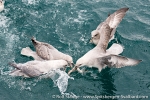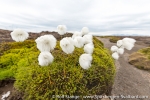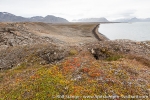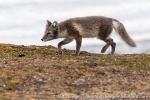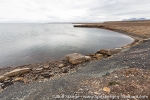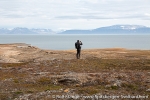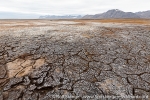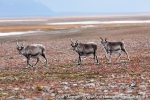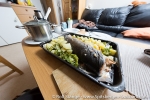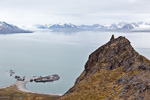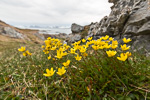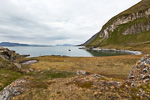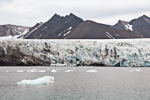-
current
recommendations- Liefdefjord
New page dedicated to one of Spitsbergen's most beautiful fjords. Background information and many photos.
- New Spitsbergen guidebook
The new edition of my Spitsbergen guidebook is out and available now!
- Liefdefjord
New page dedicated to one of Spitsbergen's most beautiful fjords. Background information and many photos.
Page Structure
-
Spitsbergen-News
- Select Month
- June 2025
- May 2025
- April 2025
- March 2025
- February 2025
- January 2025
- December 2024
- November 2024
- October 2024
- September 2024
- August 2024
- July 2024
- June 2024
- May 2024
- April 2024
- March 2024
- February 2024
- January 2024
- December 2023
- November 2023
- October 2023
- September 2023
- August 2023
- July 2023
- June 2023
- May 2023
- April 2023
- March 2023
- February 2023
- January 2023
- December 2022
- November 2022
- October 2022
- September 2022
- August 2022
- July 2022
- June 2022
- May 2022
- April 2022
- March 2022
- February 2022
- January 2022
- December 2021
- November 2021
- October 2021
- September 2021
- August 2021
- July 2021
- June 2021
- May 2021
- April 2021
- March 2021
- February 2021
- January 2021
- December 2020
- November 2020
- October 2020
- September 2020
- August 2020
- July 2020
- June 2020
- May 2020
- April 2020
- March 2020
- February 2020
- January 2020
- December 2019
- November 2019
- October 2019
- September 2019
- August 2019
- July 2019
- June 2019
- May 2019
- April 2019
- March 2019
- February 2019
- January 2019
- December 2018
- November 2018
- October 2018
- September 2018
- August 2018
- July 2018
- June 2018
- May 2018
- April 2018
- March 2018
- February 2018
- January 2018
- December 2017
- November 2017
- October 2017
- September 2017
- August 2017
- July 2017
- June 2017
- May 2017
- April 2017
- March 2017
- February 2017
- January 2017
- December 2016
- November 2016
- October 2016
- September 2016
- August 2016
- July 2016
- June 2016
- May 2016
- April 2016
- March 2016
- February 2016
- January 2016
- December 2015
- November 2015
- October 2015
- September 2015
- August 2015
- July 2015
- June 2015
- May 2015
- April 2015
- March 2015
- February 2015
- January 2015
- December 2014
- November 2014
- October 2014
- September 2014
- August 2014
- July 2014
- June 2014
- May 2014
- April 2014
- March 2014
- February 2014
- January 2014
- December 2013
- November 2013
- October 2013
- September 2013
- August 2013
- July 2013
- June 2013
- May 2013
- April 2013
- March 2013
- February 2013
- January 2013
- December 2012
- November 2012
- October 2012
- September 2012
- August 2012
- July 2012
- June 2012
- May 2012
- April 2012
- March 2012
- February 2012
- January 2012
- December 2011
- November 2011
- October 2011
- September 2011
- August 2011
- May 2011
- April 2011
- March 2011
- February 2011
- January 2011
- December 2010
- November 2010
- September 2010
- August 2010
- July 2010
- June 2010
- May 2010
- April 2010
- March 2010
- February 2010
- November 2009
- October 2009
- August 2009
- July 2009
- June 2009
- May 2009
- April 2009
- March 2009
- February 2009
- January 2009
- December 2008
- November 2008
- October 2008
- August 2008
- July 2008
- June 2008
- May 2008
- April 2008
- March 2008
- February 2008
- April 2000
- Select Month
-
weather information
-
Newsletter

| Guidebook: Spitsbergen-Svalbard |
Home
→ August, 2015
Monthly Archives: August 2015 − News & Stories
Spitsbergen calendar 2016 available
The Spitsbergen calendar 2016 is available from now on in two sizes (A3 and A5). Twelve beautiful photos bring Spitsbergen’s scenery and wildlife throughout the arctic seasons onto your wall. Click here for further information about the new Spitsbergen calendar 2016.
Der Spitzbergen-Kalender 2016 ist ab sofort wie gewohnt in den Formaten A3 und A5 erhältlich. Zwölf schöne Fotos bringen Spitzbergens Landschaften und Tiere durch die Jahreszeiten auf die Wand. Der Spitzbergen-Kalender 2016 ist hier bestellbar.
The new Spitsbergen calendar 2016.
Mild summer in Spitsbergen
According to weather data of the Norwegian Meteorological Institute, the current summer month August is the warmest of its kind since the beginning of measurements in the 1970s at the airport near Longyearbyen. The normal average temperature in August is 4.8°C. The corresponding value for 2015 will be between 6.6 and 6.8°C (the final value is not yet available).
Longyearbyen has not had summer temperatures on this average level at least since the 1970s. And indeed, parts of August were real summer in Longyearbyen, with temperatures up to around 16°C in cases. People were enjoying the outside tables of the cafés and restaurants and their own homes.
Sometimes, the warm temperatures were more of a local character: while it was more than 16°C in Longyearbyen, it was pleasantly cool (4-5°C) at Kapp Lee on Edgeøya. Altogether, however, weather data from other stations (Ny Ålesund, Isfjord Radio, Barentsburg) indicate a very mild summer also elsewhere in the region.
Locals are more worried about warmer winters than warmer summers. The winter cold is important for the fjord ice. Also shrinking glaciers already make for very obvious changes in the landscape.
Summer weather in Isfjord.
Source: NRK
Smoldering fire at cultural heritage in Colesbukta
Almost two weeks ago a team of the Sysselmannen started extinguishing a subterranean fire in Colesbukta caused by a camp fire. The fire was ignited at the foundation of a historical building which is protected as a listed monument. In Colesbukta several buildings from the time between 1913 and 1962 are preserved. They served as a harbor where coal from the nearby Russian mining settlement Grumantbyen was loaded. Both settlements are cultural heritages.
On Tuesday 13th of August the Sysselmannen was informed by tourists about the fire in Colesbukta and a team was sent by helicopter. The original camp fire was already extinguished but it had initiated a smoldering fire under the ground which was about to spread. First the Sysselmannen´s team prevented the fire from spreading by digging a trench and the cultural heritage could be saved.
As now, almost two weeks later on Tuesday 25th of August the Sysselmannen and the fire department examined the place again, they noticed that the fire was still smoldering. The fire fighters tried to extinguish it with foam and now they think about using a several meters long hose for pumping water from the coast to the fire area.
As it is prohibited in Svalbard to make a fire close to cultural heritages, the Sysselmannen is investigating in this case. So far it is not known who made the camp fire. The Sysselmannen asks for information, preferably from the responsible persons themselves.
The old mining/harbour settlement Colesbukta in winter.
Source: Svalbardposten
Nordaustland circumnavigated by sea kayakers
The main island of Spitsbergen has been circumnavigated by sea kayakers already in 1990. But the second-largest island, Nordaustland, has so far withstood all attempts. Not that there have been a lot, but there were a few, which never really took off due to heavy ice conditions.
Next to difficult ice and weather conditions, it is the long ice cliff of the ice cap Austfonna on the east and south coast of Nordaustland, which makes any attempt to kayak this coast a very demanding venture. The calving glacier front is about 160 kilometres long and does not afford any opportunity to land for a rest or to sit out bad weather.
This summer, two groups have been successful with their attempts to circumnavigate Nordaustland. The Norwegian group “Nordaustland” reached Kinnvika on August 14, where they had started their kayaking expedition. A cruise ship provided safe and comfortable transportation from Longyearbyen to Kinnvika and back, the goal of the expedition was kayaking around Nordaustland and this has been achieved. Congratulations!
But “Nordaustland 2015” were not the first group. Just about one day before, a group of three kayakers, two from New Zealand and one from Norway, had completed their kayak-circumnavigation of Nordaustland successfully. Congratulations also to this group! But they have not yet completed their expedition, as it is their ambitious plan to circumnavigate the whole archipelago, from Longyearbyen to Longyearbyen. But they have done the largest step, Nordaustland, with impressive success.
Both groups met on the way, kept good contact and supported each other with information. “Nordaustland 2015” wrote in their blog “If we reckon that Nordaustlandet is 800 million years old, 24 hours difference is insignificant.” Only a quibbler would challenge this 🙂
Both groups have made an amazing achievement with years of preparation and training. The New Zealand-Norwegian group completed the 160 kilometer ice cliff coast within 40 hours without any major rests. Camping on Isisøyane (earlier called Isispynten) was not possible because of the presence of a number of polar bears. Vibebukta was the next place where putting up a tent was an option. Drift ice and fog slowed the trip down. Fridtjof Nansen, who in 1895 and 1896 made an incredible kajak adventure north of and within Franz Josef Land together with Hjalmar Johansen during his Fram Expedition, would be impressed.
Glacier front on the south coast of Nordaustland behind dense drift ice, July 2015.
Sources: Nordaustland 2015 (Facebook), Ice bears and Islands
Sysselmannen removes garbage from Svalbard´s beaches
This year an amount of 101 cubic meters of garbage was collected on the Sysselmannen´s annual cleanup cruise to remote beaches in Svalbard. The Sysselmannen´s ship ‘Polarsyssel’ was operating for eight days, approaching three places at the west- and the north coast of the main island Spitsbergen and two places in the northwest of the island Nordaustlandet. 24 volunteers supported the Sysselmannen´s crew in cleaning the single coastlines from garbage that was washed ashore.
It is most of all plastic garbage of different kind and size from all over the world which floats on the ocean´s surface, sometimes for years, and finally finds its way to the coast. And the bigger part derives from the fishing industry: fishnets, fishnet floats, ropes and so on. For animals the garbage can turn into a lethal trap, in the water as well as ashore. Seabirds for example swallow small pieces of plastic which they are not able to digest. They finally die by the accumulation of plastic pieces in their stomachs. Birds and other animals get entangled in ropes and fishnets. On this year´s campaign the Sysselmannen´s crew found a reindeer skeleton completely wrapped in a fishnet and in 2014 a polar bear was trailing a huge fishnet with its ear. The net got stuck at an earmark placed by scientists (see also Spitsbergen-Svalbard.com news Again polar bear caught in fishing net from August 2014).
With 101 cubic meters there was more garbage collected than last year (88 cubic meters). Yet, the Sysselmannen´s cleanup cruise was not as successful as expected. In the beginning the work was two times disturbed by polar bears showing up and later bad weather prevented the approach to highly polluted beaches. Special thanks go to the local population with its willingness to support the campaign. More than 200 locals volunteered for the cleanup and finally 24 were chosen to accompany the Sysselmannen´s crew.
Generally, the Sysselmannen can only cover a very small part of Svalbard´s coasts with this annual campaign, as for example this year there were only five beaches cleaned. Therefore smaller private expedition cruise ships are a significant help in this case, as most of them constantly arrange similar cleanups with their passengers (see also Spitsbergen-Svalbard.com news The Ocean Cleanup: solution for the global plastic pollution problem from June 2014).
Fishnet washed ashore
© Christian Nicolai Bjørke
Source: Sysselmannen, Svalbardposten
Four polar bears, one walrus – 11th August 2015
Tue
11 Aug
2015
New trip, new luck. Old polar friends with their friends and relatives, a very familiar setting right from the beginning. Very pleasant.
A little bit of swell in the Isfjord entrance. Christmas-tree Willi finds out that the sea is something different than a forest. The shaking of a boat is less pleasant than the shaking of the trees.
Mirror images on the water in Forlandsund. Mountains and glaciers seem to rise both upwards into the sky and downwards on the water.
Photo Kongsfjord – 11th August 2015 – 1/2

Ny Ålesund is a good start, a gentle transition from zivilisation to the arctic wilderness. And meeting Marten Loonen, the head of the Dutch arctic station, is always a very pleasant affair, where you will always learn a lot. Geese and foxes change in having good and bad years, roughly similarly to lemmings. The cycles don’t have three years, but seven or eight. The grass, the reindeer, rain or snow, it is all part of the system. It is complex.
Photo Kongsfjord – 11th August 2015 – 2/2

A dead walrus on the shore as attracted two polar bear families. Two mothers, each with one cub of the year. One family is staying a bit away while the other one is feeding. The mother is paying full attention to the walrus carcass, while the cub is busy with a piece of driftwood. The small boat with the visitors off the beach is, however, completely irrelevant to them. A reach meal, a feast for bears and tourists. A wild bit of arctic nature. A great experience. Unless you are the walrus.
Erdmannflya – 05th August 2015
Wed
5 Aug
2015
A calm night, a calm passage northwards to Isfjord, interrupted only by a short stop when cod appeared on the depth sounder – dinner was secured. Time to show some photos, for the very first time, from our Beerenberg ascent on Jan Mayen in July.
Then we reach Borebukta, one of those bays in the rather civilised Isfjord area where there is not too much traffic. Once again, we venture into the arctic wilderness, without seeing anyone. Once again into the silent tundra, flat coastal plains, which seem boring from the distance but are actually full of details. An old, small sealing ship on the shore looks as if it was left behind by its crew with the intention to continue the voyage soon, but they never returned. What happened? No idea. (Amendment: the boat was left there by a well-known inhabitant of Longyearbyen usually known as „Hamarøyen“ – he came from the island Hamarøy – to serve as accommodation. The nearby lake has always been popular for fishing amongst the locals).
Beaches, interrupted by small capes and cliff coasts, incised rivers. Rock landscapes with fox dens, and very appropriately, two young polar foxes, one of them reasonably curious. A little herd of six reindeer making a curious semi-circle around us. A nice farewell from Spitsbergen’s tundra.
The surf had picked up and did not leave all boots dry. Good we had been able to avoid that during the trips so far.
Gallery Erdmannflya – 05th August 2015
- gallery anchor link: #gallery_732
Click on thumbnail to open an enlarged version of the specific photo.
A last, calm night at anchor in Colesbukta, then some final miles to Longyearbyen. Then the voyage is over. My very own party is based on fresh arctic char from the north coast, a present from Pål. It is enough for me for two days.
Bellsund – 04th August 2015
Tue
4 Aug
2015
Bellsund – sounds almost like home, a peaceful place J far away from all that ice, back in the green tundra under the noisy birdcliffs, the colourful flowers, the reindeer, the elegantly curved bays. After a day on the ship yesterday, it was nice to stretch legs a little bit, a good 300 metres up to get a panorama view of Bellsund. Akseløya with its amazing structures in the north, Fridtjovbreen, the large valleys Berzeliusdalen and Reindalen. The lush tundra with countless flowers on Midterhuksletta, interrupted by deeply incised ice wedges. The little rocky capes on the southern side, and some jagged mountains and wide glaciers in the distance. An amazingly beautiful country, on a good day.
Gallery Bellsund – 04th August 2015
- gallery anchor link: #gallery_730
Click on thumbnail to open an enlarged version of the specific photo.
A calm evening at anchor with a view to Fridtjovbreen rounds the day off.
Ice … with a little help from my friends – 03rd August 2015
Mon
3 Aug
2015
Yes, the ice keeps on keeping us busy for some time. The next dense belt of drift ice is just ahead of us. Sørkapp Land seems so close. Given these conditions, there are not many other ships in the area, but we are not the only ones now. The Hurtigruten ship MS Fram is north of us, steaming south, a fast, strong vessel with a friendly Captain. We continue behind Fram, the ship is wide enough to create a nice channel in the ice. Their passengers are enjoying the operation, and so do we. Not an everyday thing, definitely.
Photo Sørkapp – 03rd August 2015 – 1/3

After a first, dense section, the ice is getting more open. Kittywakes are fishing in Fram’s wake, and the wild scenery of Sørkapp Land provides a splendid background. And as a final highlight, a polar bear is showing up. A big, strong, proud male, battle-scarred with many scars on its face and nose.
Photo Sørkapp – 03rd August 2015 – 2/3

The wide passage around the south cape takes most of the night, and there are drift ice fields between us and the coast all of the time. Same now, in the early morning. Hornsund is in view, but behind wide ice fields. We are cruising between the ice floes, Pål is enjoying his time on the steering wheel, while I am watching for polar bears and writing this blog in between.
Photo Sørkapp – 03rd August 2015 – 3/3

We will keep a distance to Hornsund, let’s see where we end up today, probably Bellsund. A good, safe anchorage is the next thing we need, some rest for the skipper, a landing for everybody else.
Ice – 03rd August 2015
Mon
3 Aug
2015
Ice … we’ve had a similar headline before, didn’t we? Possibly. Now we are off Isbukta, southern east coast of Spitsbergen. At least, we have not been this far south before, recently, the south cape seems so close.
Earlier today, we thought once again that we were through, the ice stayed behind, open water ahead … but a few miles later, more ice, the next dense belt of drift ice. According to today’s ice chart, it should have been an isolated field of „open drift ice“, well, we have heard that before.
Photo Ice – 03rd August 2015

Habenichtbukta – 01st + 02nd August 2015
Sun
2 Aug
2015
Let’s forget yesterday. Too many tough hours were spent criss-crossing Storfjord, back and forth, in strong wind and high seas, trying to find an opening in the ice and a passage south. What looked like a passage turned out to be a dead-end road. The east coast of Spitsbergen looked so close, Hornsundtind was clearly visible, but as out-of-reach as the moon.
Habenichtbukta – 01st + 02nd August 2015

Finally we declared the case as hopeless for the time being and steamed off towards Edgeøya, some more hours against the waves, but then we found a good anchorage in Habenichtbukta, sheltered from the sea and thus reasonably calm. Soon, life came back on our good, little Arctica II, people appeared again and chaos was turned back into a cosy home.
The idea to sit the weather out in this rather comfortable position was quickly welcomed by everyone. We could also expect that the ice, which according to all available information couldn’t be more than a relatively thin stripe, should be spread by the strong wind, so a passage to the south cape should be possible in the near future. So the next thing to do was a good dinner, an enjoyable social evening and a good, long night’s sleep J
Photo Hassensteinbukta – 02. August 2015

The wide tundra of southwestern Edgeøya is an arctic dream, so of course we went out this morning to explore a bit, and our little sunday morning walk turned out to last a good couple of hours. The tundra has an amazing display of colours, it covers a lowland of rolling hills on basalt rock. Altogether, this attracts the eye and the attention without any limitation. The wide flat-topped mountains in the distance give the scenery the character that is so typical for southeastern Spitsbergen. A wild, beautiful arctic country. Colourful flowers, the polar willow is showing the first hints of autumn. A multi-channeled arctic river, a reindeer, old fox traps from times of hunting which are history now since long. A long, silent rest to enjoy the impressions and let the eye wander and the spirit wonder.
Photo Habenichtbukta – 02. August 2015

A second landing in the late afternoon turned out to be a short-lived affair. After a short walk only, we saw a polar bear walking a bit further south. We went back to the ship and left him alone in his kingdom.
More walrusses, more wind, more ice – 07/31 + 08/01/2015
Sat
1 Aug
2015
(31st July – 01st August 2015) – The day started nice and sunny, but soon it turned out to be quite windy, which is not particularly helpful on the rather unprotected shores of Storfjord. Against expectation, we managed a landing on Edgeøya, enjoyed the lovely tundra, the wide landscape, a group of walrusses sunbathing near an old trapper hut, not far from a walrus graveyard where hundreds of their grandgrandparents were slaughtered by whalers and hunters for their ivory, blubber and skin. Now, walrusses are again enjoying their life near the old, bleaching bones. Nature is taking her space again, even if it takes time.
More walrusses, more wind, more ice – 07/31 + 08/01/2015

Assuming that completing a circumnavigation of Spitsbergen would only be a matter of sailing down Storfjord and around the south cape, we set course that way. But the ice field that was shown on the latest ice chart as a rather thin belt of open drift between southern Edgeøya and the east coast of Spitsbergen turned out to be solid, dense pack ice, pushed together by the strong northerly wind. Now we have been trying for more than 12 hours to find a gap in that ice field, and if we don’t find it soon, then we have to turn around and head northwards again, back through Heleysund and Hinlopen Strait … not a very pleasant thought at all, but nature rules. A kingdom for an accurate, up-to-date ice chart and a good weather forecast!
News-Listing live generated at 2025/June/15 at 07:01:44 Uhr (GMT+1)





